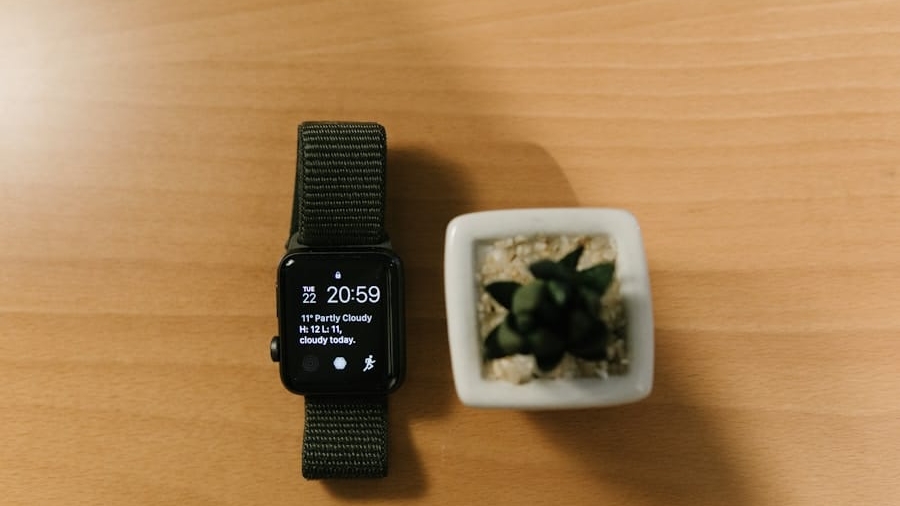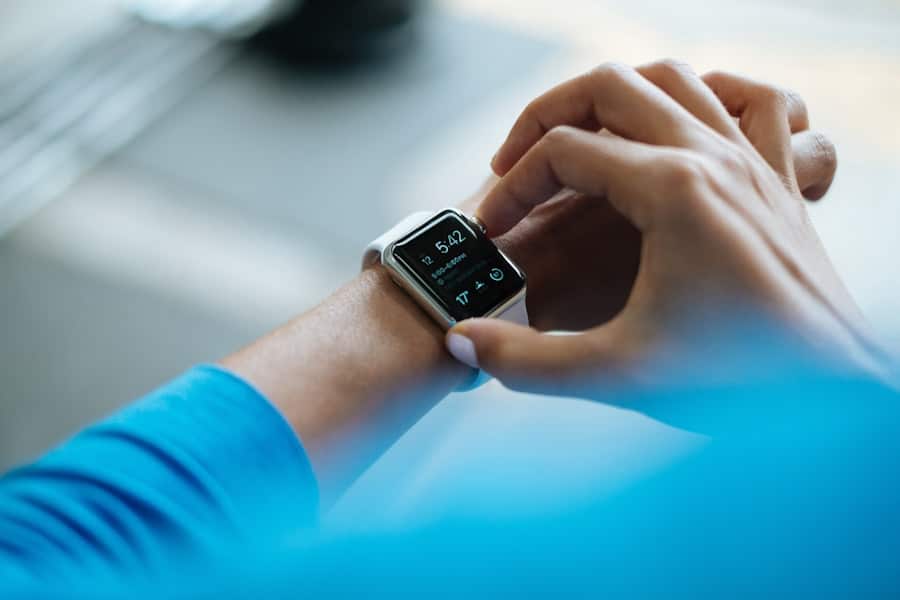The advent of artificial intelligence (AI) has ushered in a new era of technological innovation, particularly in the realm of health and wellness. Among the most exciting developments are AI-enabled wearables, devices that integrate advanced algorithms and machine learning capabilities to monitor various aspects of human health. These wearables, which include smartwatches, fitness trackers, and specialized health monitors, have evolved from simple pedometers and heart rate monitors into sophisticated tools capable of providing real-time insights into an individual’s physiological state.
The integration of AI into these devices enhances their functionality, allowing for more accurate data collection and analysis, ultimately leading to improved health outcomes. AI-enabled wearables are not just limited to tracking physical activity; they are increasingly being utilized for nutritional monitoring as well. As individuals become more health-conscious and seek to optimize their diets, the demand for tools that can provide personalized nutritional insights has surged.
These devices can analyze dietary habits, suggest healthier alternatives, and even track caloric intake with remarkable precision. By leveraging AI, wearables can process vast amounts of data, learning from user behavior and preferences to offer tailored recommendations that align with individual health goals. This intersection of technology and nutrition represents a significant shift in how we approach dietary management and wellness.
Key Takeaways
- AI-enabled wearables are revolutionizing the way we monitor our nutritional intake and personalize our diets.
- AI plays a crucial role in nutritional monitoring by analyzing data and providing personalized recommendations.
- The advantages of AI-enabled wearables for nutritional monitoring include real-time tracking, accurate analysis, and personalized insights.
- These wearables track and analyze nutritional intake through sensors, image recognition, and machine learning algorithms.
- The impact of AI-enabled wearables on personalized nutrition is significant, as they provide tailored recommendations for individuals’ specific dietary needs.
The Role of AI in Nutritional Monitoring
Tracking Eating Habits
For instance, an AI-enabled wearable can track the frequency of meals, portion sizes, and even the nutritional content of foods consumed. By processing this information, the device can provide insights into whether a user is meeting their dietary goals or if adjustments are necessary.
Image Recognition Technology
Moreover, AI enhances the accuracy of nutritional monitoring by utilizing image recognition technology. Many wearables now incorporate cameras or allow users to upload images of their meals.
Reliable Data for Informed Choices
This capability not only simplifies the process of logging meals but also reduces the likelihood of human error in estimating portion sizes or calorie counts. As a result, users receive more reliable data about their nutritional intake, which is crucial for making informed dietary choices.
Advantages of AI-Enabled Wearables for Nutritional Monitoring
The advantages of AI-enabled wearables for nutritional monitoring are manifold, particularly in their ability to provide personalized insights that cater to individual needs. One significant benefit is the real-time feedback these devices offer. Users can receive immediate notifications about their dietary choices, allowing them to make adjustments on the fly.
For example, if a user logs a meal that is high in sugar or saturated fat, the wearable can alert them to this fact and suggest healthier alternatives based on their dietary preferences and restrictions. This immediate feedback loop fosters a more proactive approach to nutrition management. Another advantage lies in the ability of AI-enabled wearables to integrate with other health data collected by the device.
For instance, if a user is also tracking their physical activity levels or sleep patterns, the wearable can correlate this information with dietary habits to provide a holistic view of health. This interconnectedness allows for more comprehensive insights; for example, if a user is not sleeping well, the device might analyze their food intake to determine if certain dietary choices are contributing to sleep disturbances. By considering multiple facets of health simultaneously, AI-enabled wearables empower users to make informed decisions that enhance overall well-being.
How AI-Enabled Wearables Track and Analyze Nutritional Intake
AI-enabled wearables employ a variety of methods to track and analyze nutritional intake effectively. One common approach involves the use of mobile applications that accompany the wearable device. Users can log their meals manually or utilize features such as barcode scanning or photo recognition to input food items quickly.
The AI algorithms then process this data against extensive food databases that contain nutritional information for thousands of items. This capability allows for accurate tracking of macronutrients such as carbohydrates, proteins, and fats, as well as micronutrients like vitamins and minerals. In addition to manual logging, some advanced wearables utilize sensors that can detect biochemical markers in bodily fluids such as sweat or saliva.
These sensors can provide insights into hydration levels or nutrient deficiencies by analyzing specific biomarkers related to nutrition. For example, a wearable might measure glucose levels in sweat to assess carbohydrate intake or monitor hydration status through electrolyte concentrations. By combining these sensor technologies with AI analytics, wearables can offer a more nuanced understanding of an individual’s nutritional status and needs.
The Impact of AI-Enabled Wearables on Personalized Nutrition
The impact of AI-enabled wearables on personalized nutrition is profound, as these devices facilitate a shift from one-size-fits-all dietary recommendations to tailored nutrition plans that consider individual preferences, goals, and health conditions. By analyzing data collected over time, AI algorithms can identify specific dietary patterns that work best for each user. For instance, if a user consistently feels fatigued after consuming certain foods, the wearable can flag these items and suggest alternatives that align better with their energy levels.
Furthermore, AI-enabled wearables can adapt recommendations based on changes in lifestyle or health status. If a user begins a new exercise regimen or experiences a significant life event such as pregnancy or illness, the wearable can adjust its nutritional guidance accordingly. This adaptability ensures that users receive relevant advice that evolves with their circumstances, promoting sustained engagement with healthy eating practices.
The result is a more dynamic approach to nutrition that empowers individuals to take control of their dietary choices in a way that aligns with their unique life journey.
Challenges and Limitations of AI-Enabled Wearables in Nutritional Monitoring
Accuracy of Food Databases
One significant challenge is the accuracy of food databases used for analysis. While many databases contain extensive information about various foods, they may not always reflect regional variations or specific brands accurately. This discrepancy can lead to errors in nutritional tracking and undermine users’ trust in the device’s recommendations.
User Compliance and Engagement
Another limitation is related to user compliance and engagement. While wearables can provide valuable insights, their effectiveness largely depends on users’ willingness to consistently log their meals and adhere to recommendations. Many individuals may find it cumbersome to track every meal or may forget to input data regularly. Additionally, some users may struggle with understanding the nutritional information provided by the device or may feel overwhelmed by the volume of data presented.
Future Developments and Trends in AI-Enabled Wearables for Nutritional Monitoring
The future of AI-enabled wearables for nutritional monitoring is poised for exciting developments as technology continues to advance at a rapid pace. One emerging trend is the integration of augmented reality (AR) into nutritional tracking. Imagine wearing smart glasses that overlay nutritional information onto your food as you prepare meals or dine out.
This technology could revolutionize how individuals interact with their food choices by providing real-time insights about calorie counts, ingredient quality, and potential allergens right before consumption. Additionally, advancements in machine learning will likely enhance the predictive capabilities of these devices. Future wearables may not only analyze past eating habits but also predict future dietary needs based on factors such as activity levels, metabolic rates, and even genetic predispositions.
This level of personalization could lead to highly tailored nutrition plans that optimize health outcomes for individuals based on their unique biological makeup.
The Potential of AI-Enabled Wearables in Revolutionizing Nutritional Monitoring
The potential of AI-enabled wearables in revolutionizing nutritional monitoring is immense as they combine cutting-edge technology with personalized health insights. By harnessing the power of artificial intelligence, these devices offer users unprecedented access to detailed information about their dietary habits while promoting healthier choices through real-time feedback and tailored recommendations. As technology continues to evolve, we can expect even greater advancements that will further enhance our understanding of nutrition and its impact on overall health.
As society becomes increasingly aware of the importance of nutrition in maintaining well-being, AI-enabled wearables will play a crucial role in empowering individuals to take charge of their dietary choices. By providing accurate tracking capabilities and personalized insights, these devices have the potential to transform how we approach nutrition management—making it more accessible, engaging, and effective than ever before. The future holds exciting possibilities for those seeking to optimize their health through informed dietary decisions facilitated by innovative wearable technology.
A related article discussing the best Android health management watches can be found at this link. This article provides insights into the top wearable devices that can support nutritional monitoring through AI technology. These watches offer features such as calorie tracking, meal planning, and personalized recommendations to help users maintain a healthy diet. By combining the information from these AI-enabled wearables with the data collected from nutritional monitoring, individuals can make more informed decisions about their health and well-being.
FAQs
What are AI-enabled wearables?
AI-enabled wearables are devices that incorporate artificial intelligence (AI) technology to provide advanced features such as data analysis, personalized recommendations, and predictive insights. These wearables can include smartwatches, fitness trackers, and other devices that are worn on the body.
How do AI-enabled wearables support nutritional monitoring?
AI-enabled wearables support nutritional monitoring by using sensors to track food intake, analyze dietary patterns, and provide personalized recommendations for improving nutrition. These devices can also integrate with mobile apps and other platforms to provide a comprehensive view of an individual’s nutritional habits.
What are the benefits of using AI-enabled wearables for nutritional monitoring?
The benefits of using AI-enabled wearables for nutritional monitoring include the ability to track and analyze dietary habits in real time, receive personalized recommendations for improving nutrition, and gain insights into how dietary choices impact overall health and wellness. These devices can also help individuals make more informed decisions about their food choices and overall dietary habits.
How accurate are AI-enabled wearables for nutritional monitoring?
The accuracy of AI-enabled wearables for nutritional monitoring can vary depending on the specific device and its capabilities. While these devices can provide valuable insights and recommendations, it’s important to consider that they may not always be 100% accurate in tracking food intake and nutritional content. Users should use these devices as a tool to support their overall nutritional goals, rather than relying solely on their data for making dietary decisions.
What are some popular AI-enabled wearables for nutritional monitoring?
Some popular AI-enabled wearables for nutritional monitoring include smartwatches with built-in food tracking features, fitness trackers that integrate with nutrition apps, and specialized devices designed specifically for tracking dietary habits. These devices often use AI technology to analyze data and provide personalized insights for improving nutrition.



